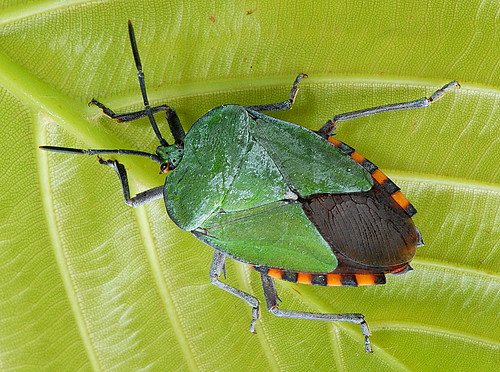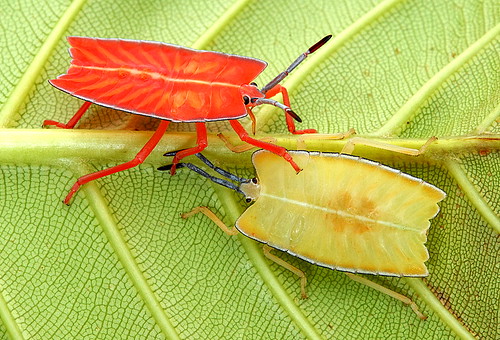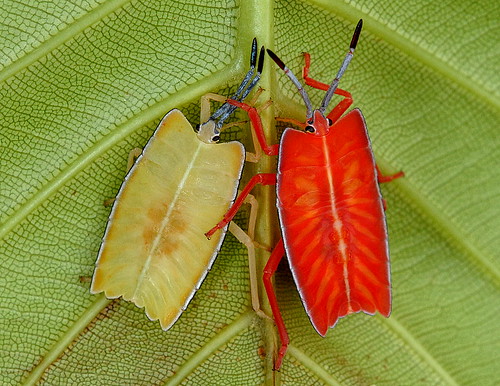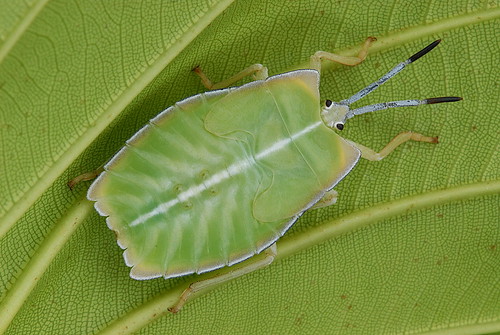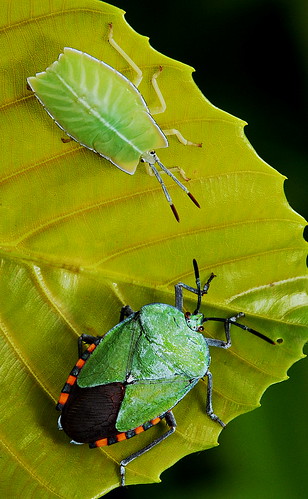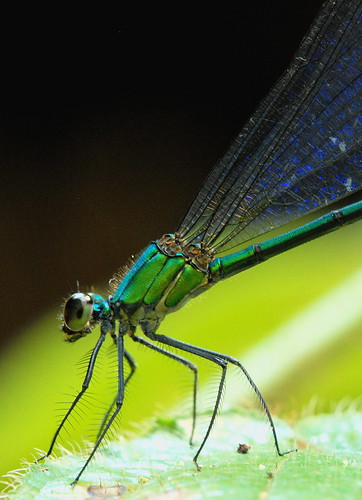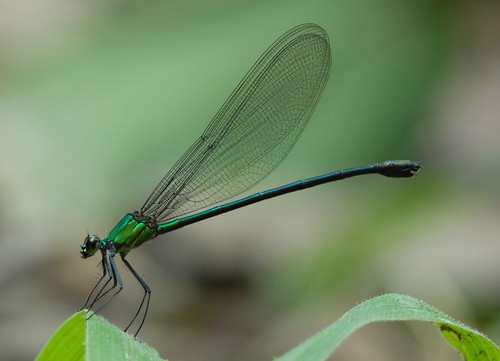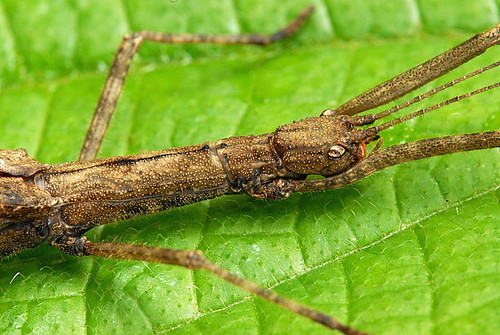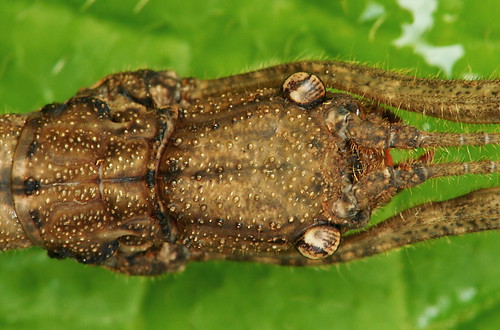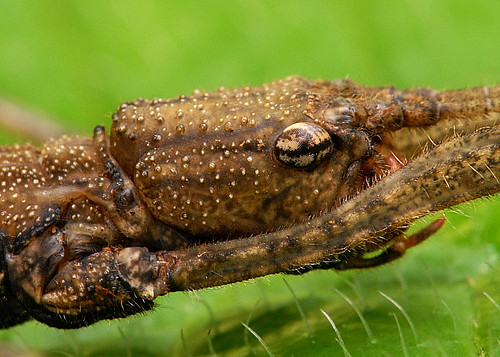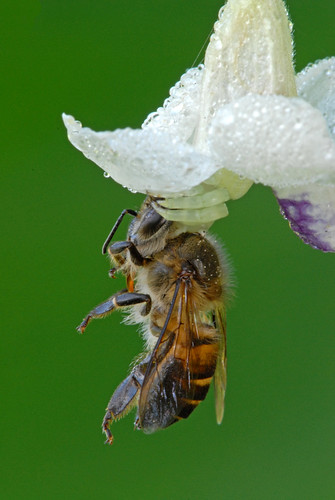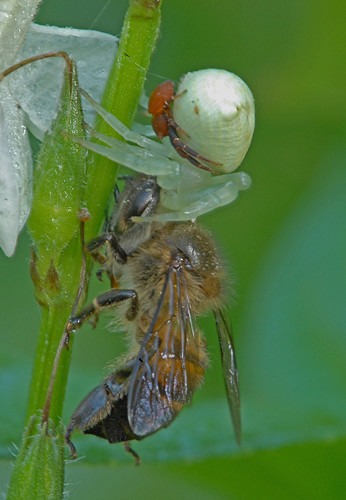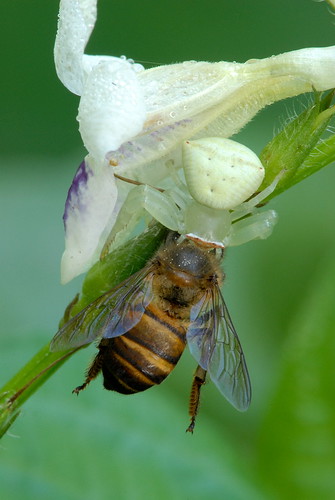Thank Tony for spotting and sharing this particular family of bugs, to Allan for sharing this STARBUG with me to record the molting process. We were shooting the same individual and I was shooting from the side.
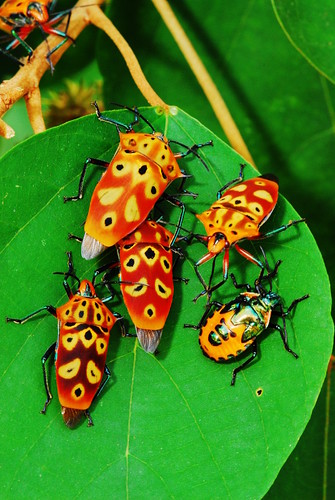
2- Shield Bug, Adult; FL 180mm, 1/13sec-F/22, Manual, ISO 400, fill flash, FEC -1.3 (master) & -1.7 ev (remote); tripod, MLU, CCK, Singapore, 4 Oct 2008.

3. Moult 1; FL 180mm, 1/13sec-F/22, Manual, ISO 400, fill flash, FEC -1.3 (master) & -1.7 ev (remote); tripod, MLU, CCK, Singapore, 4 Oct 2008.
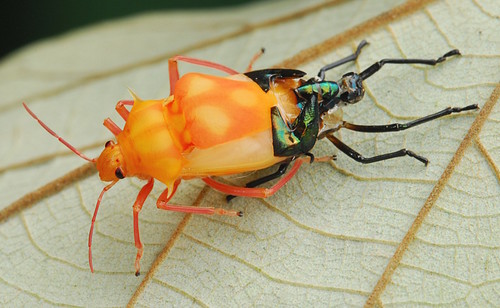
4. Moult 2, FL 180mm, 1/13sec-F/22, Manual, ISO 400, fill flash, FEC -1.3 (master) & -1.7 ev (remote); tripod, MLU, CCK, Singapore, 4 Oct 2008.
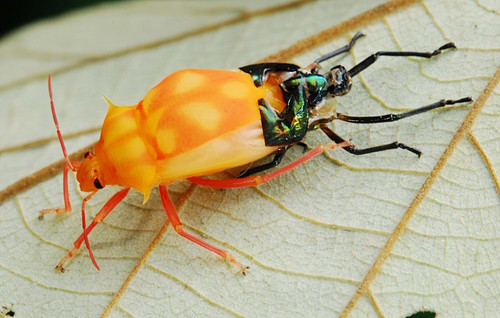
5. Moult 3; FL 180mm, 1/13sec-F/22, Manual, ISO 400, fill flash, FEC -1.3 (master) & -1.7 ev (remote); tripod, MLU, CCK, Singapore, 4 Oct 2008.

6: Moult 4; FL 180mm, 1/13sec-F/22, Manual, ISO 400, fill flash, FEC -1.3 (master) & -1.7 ev (remote); tripod, MLU, CCK, Singapore, 4 Oct 2008.

7: Out eventually! FL 180mm, 1/5sec-F/22, Manual, ISO 400, fill flash, FEC -1.3 (master) & -1.7 ev (remote); tripod, MLU, CCK, Singapore, 4 Oct 2008.
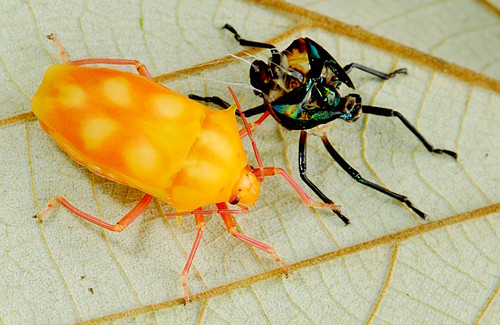
We observed several individuals and all have the same behaviour of turning themselves 180 degree after separated from the original shell (molt), then moved up to pose side by side with the molt. Got no idea of why they got such behavior!?
